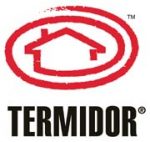 Pentatomidae is a family of insects belonging to the order Hemiptera, generally called shield bugs or stink bugs. Pentatomidae is the largest family in the superfamily Pentatomoidea, and contains around 900 genera and over 4700 species. As hemipterans, the pentatomids have piercing sucking mouthparts, and most are phytophagous, including several species which are severe pests on agricultural crops. However, some species, particularly in the subfamily Asopinae, are predatory and may be considered beneficial.
Pentatomidae is a family of insects belonging to the order Hemiptera, generally called shield bugs or stink bugs. Pentatomidae is the largest family in the superfamily Pentatomoidea, and contains around 900 genera and over 4700 species. As hemipterans, the pentatomids have piercing sucking mouthparts, and most are phytophagous, including several species which are severe pests on agricultural crops. However, some species, particularly in the subfamily Asopinae, are predatory and may be considered beneficial.
Etymology
The name “Pentatomidae” is from the Greek pente meaning “five” and tomos meaning “section”, and refers to the five segments of their antennae. Pentatomids are generally called “shield bugs” in English, or “stink bugs” in American English. However, the term shield bugs is also applied broadly to include several related families (e.g. Acanthosomatidae, Scutelleridae, and Cydnidae), or specifically only to refer to species in the family Acanthosomatidae. The term shield bug refers to the generalized body shape of adult bugs in these families which resembles a heraldic shield when viewed from above.
The American name “stink bug” is specific to the Pentatomidae, and refers to their ability to release a pungent defensive spray when threatened, disturbed, or crushed. The composition of this spray may vary between species, and even by sex or age, but generally includes aldehydes and alkanes. Descriptions of the smells vary widely, and include oily, dusty, woody and earthy, and like coriander. In some species, the liquid contains cyanide compounds and a rancid almond scent, used to protect themselves and discourage predators.
Taxonomy
There are several subfamilies, of which the Australian Aphylinae is often given family status, but is here retained as a subfamily, following Grazia et al. (2008).
Description
All pentatomids have 5-segmented antennae, and 3 tarsal segments on each foot. They generally have a large triangular scutellum in the center of the back. The body shape of adult pentatomids is generally “shieldlike,” when viewed from above, but this varies between species, and is not true for the immature nymphal stages. The forewings of stink bugs are called hemelytra, with the basal half thickened while the apex is membranous. At rest, the wings are laid across the back of the insect, with the membranous wingtips overlapping. The hindwings are entirely membranous.
Source: Wikipedia





